Let's talk Leonbergers
Playful? Docile? Cuddly? The Leonberger is all this and more. Even at 170 pounds (77kg), this giant breed is quite gentle, such is their instinctively elegant manner. They were bred mostly from Newfoundlands and St. Bernards, both giant breeds also known for their graceful demeanours. In spite of their size, Leonbergers are quite adroit and move with a skillful gait. This sweet-natured dog savours as much time with their family as they can get.
Official name: Leonberger
Other names: Leonberger Dog
Origins: Germany
Drooling tendencies
4 out of 5Shedding Level
5 out of 5Energy level*
3 out of 5Compatibility with other pets
3 out of 5Warm weather?
1 out of 5Suited to apartment living
1 out of 5Family pet?*
4 out of 5Can stay alone
2 out of 5
| Male | Female |
|---|---|
| Height | Height |
| 72 - 80 cm | 65 - 75 cm |
| Weight | Weight |
| 50 - 77 kg | 40 - 63 kg |
| Life stages | |
|---|---|
| Adult | |
| 8 months to 2 years | |
| Mature | Senior |
| 2 to 5 years | From 5 years |
| Baby | |
| Birth to 2 months | |
Drooling tendencies
4 out of 5Shedding Level
5 out of 5Energy level*
3 out of 5Compatibility with other pets
3 out of 5Warm weather?
1 out of 5Suited to apartment living
1 out of 5Family pet?*
4 out of 5Can stay alone
2 out of 5
| Male | Female |
|---|---|
| Height | Height |
| 72 - 80 cm | 65 - 75 cm |
| Weight | Weight |
| 50 - 77 kg | 40 - 63 kg |
| Life stages | |
|---|---|
| Adult | |
| 8 months to 2 years | |
| Mature | Senior |
| 2 to 5 years | From 5 years |
| Baby | |
| Birth to 2 months | |
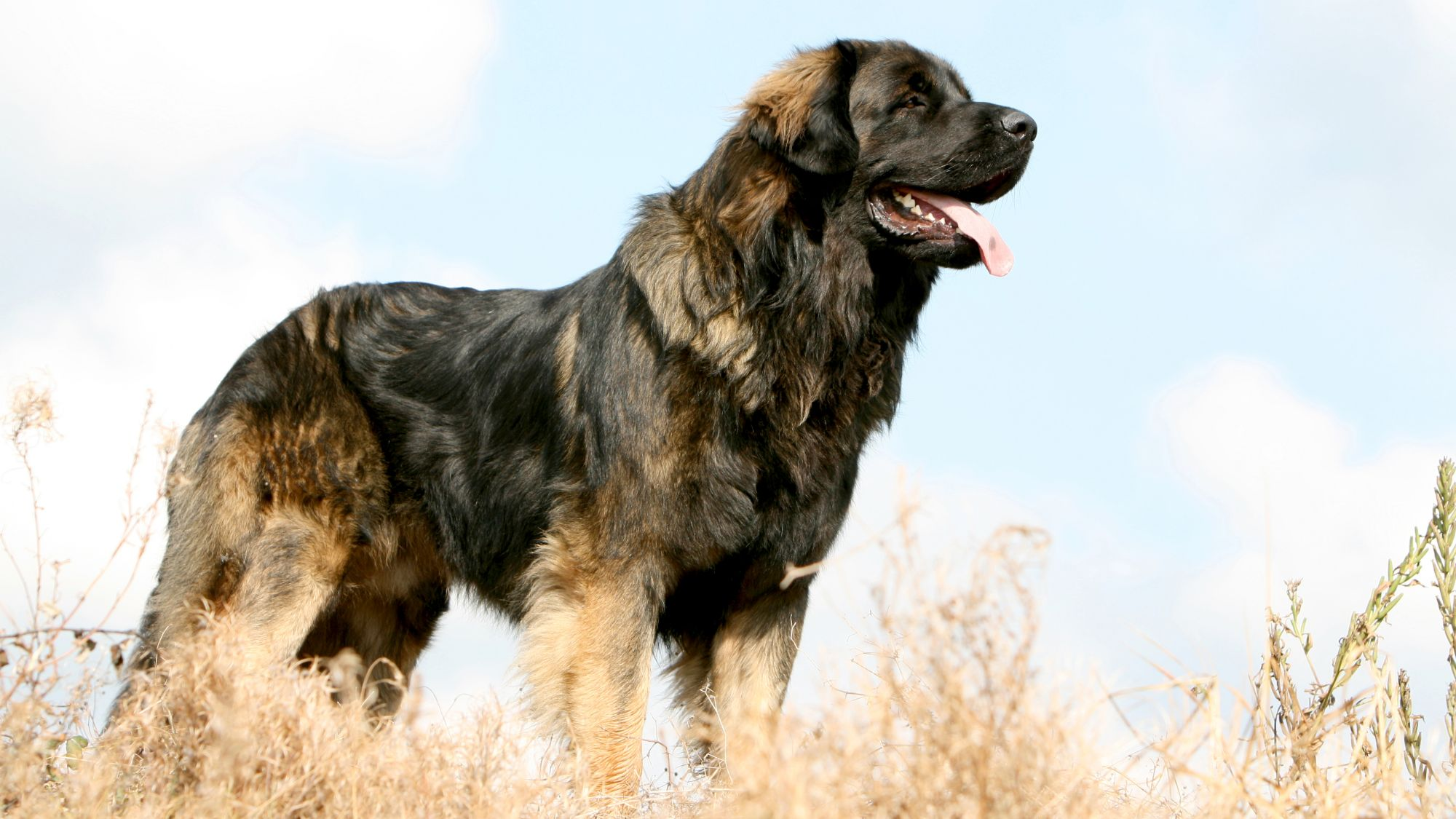
Get to know the Leonberger
All you need to know about the breed
There is so much to say about the lovely Leonberger dog: Bred to be guardians, they are homebodies, family oriented, lovers of swimming (!), and long walks. A better mix of canine characteristics could hardly be found. So protective is their nature too at times that the Leonberger will routinely walk the house to ensure everyone is safe and sound and all is right on the homefront.
This giant breed can be compared to others of their girth, with their large limbs and hulking body as well as long luscious fur. What makes the Leonberger stand out? The lion-esque mane that rings their face, a super physical aspect that, along with their kind eyes, charms all who cross their path. They tend to keep to themselves – they are fairly quiet – but despite their gentleness and docility, the Leonberger has a deep bark, which, along with one glance at their size, will keep any would-be intruders at bay.
The Leonberger breed doesn’t reach full maturity until they are three years of age. This is typically a very robust dog but care should be taken to ensure they are kept as healthy as possible given their size; put otherwise, they are a lot of dog to tend to! Two things the Leonberger definitely needs: Attention and tenderness, which they will gladly return in spades.
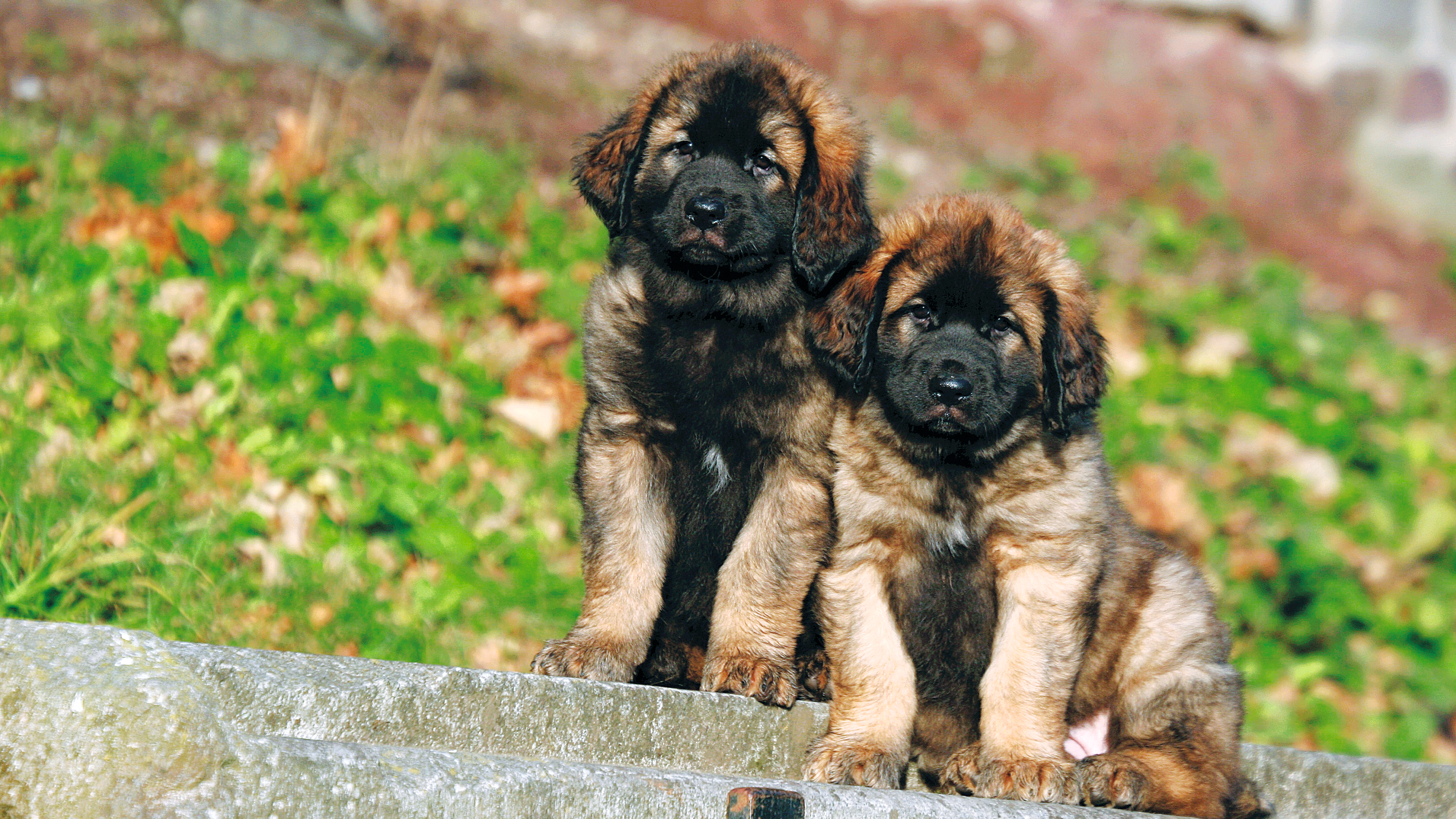
2 facts about Leonbergers
1. Interior motives
The Leonberger hardly seems the kind of dog who would like to spend time within four walls but they are actually a very laid-back breed. Being by the side of their family is their biggest concern—as is keeping them safe.
2. Doing laps
Like all breeds, the Leonberger definitely needs exercise and there is one activity they really like: Swimming! They truly enjoy paddling around a pool or lake, and the buoyancy of the water is actually the best fit for their very large limbs since the breed is prone to suffer from joint issues or arthritis as they age. Break out the fins and dive in with your dog!
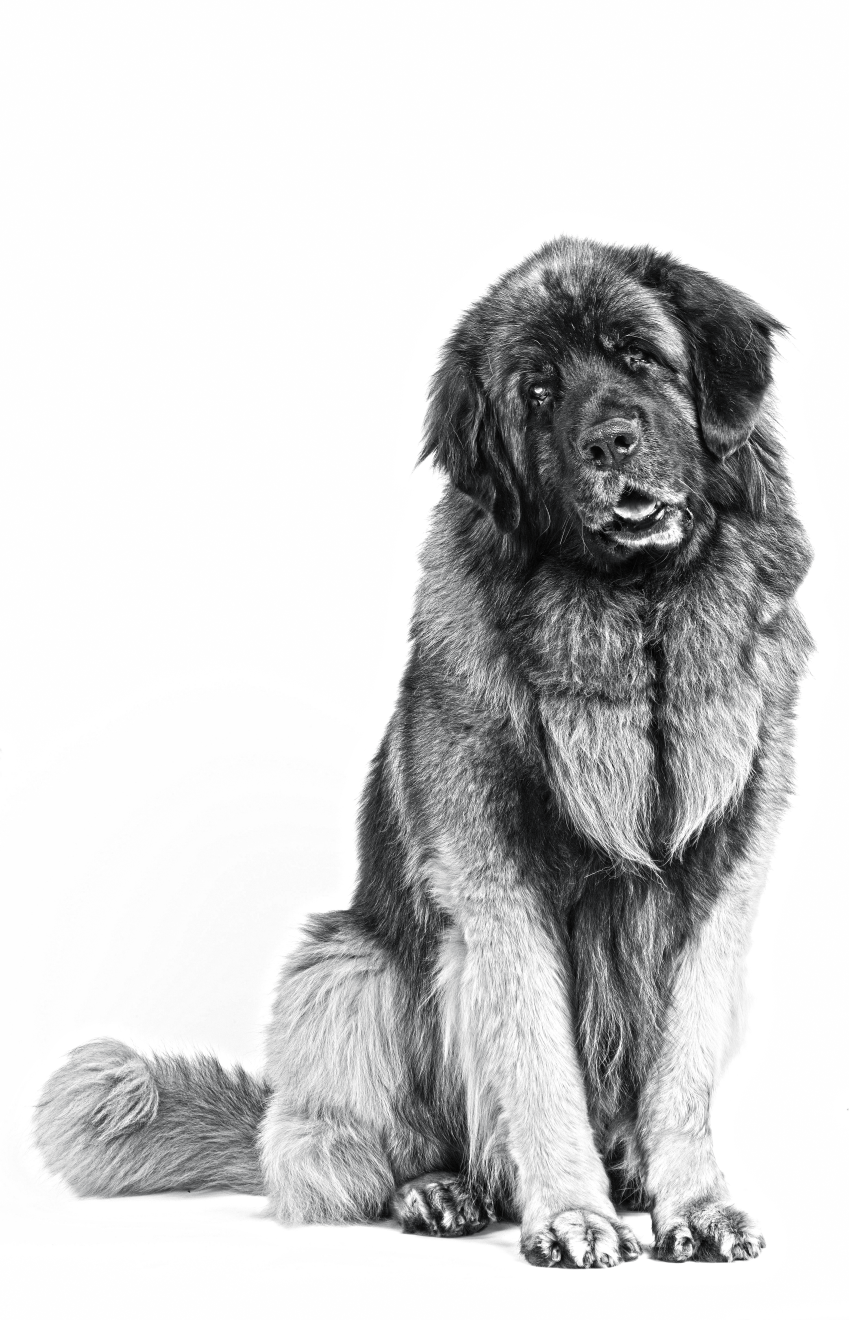
History of the breed
Germany is famous for the German Shepherd, the German Shorthaired Pointer, and the Dachshund, but the Leonberger is one of the country’s best breeds yet not as well known.
They were developed in the mid-1800s by Heinrich Essig, a city councillor in Leonberg, Germany who aimed to create a new breed resembling a lion, depicted on the city’s coat of arms. He cross-bred a female Newfoundland with a male St. Bernard to produce the profuse and regal Leonberger breed, introducing other working breeds as well over the years.
Essig’s goal was also to develop the Leonberger for royalty, and the breed quickly caught on, with such patrons as King Edward VII, Tsar Alexander II, and Napoleon III.
As with many European breeds, World War II wreaked havoc on the numbers of Leonbergers, so much so that only 25 were known to exist afterwards, and only five fit for breeding.
The Leonberger was officially recognised by the Fédération Cynologique in 1955.
From head to tail
Physical characteristics of Leonbergers
1.Ears
2.Head
3.Body
4.Coat
5.Tail
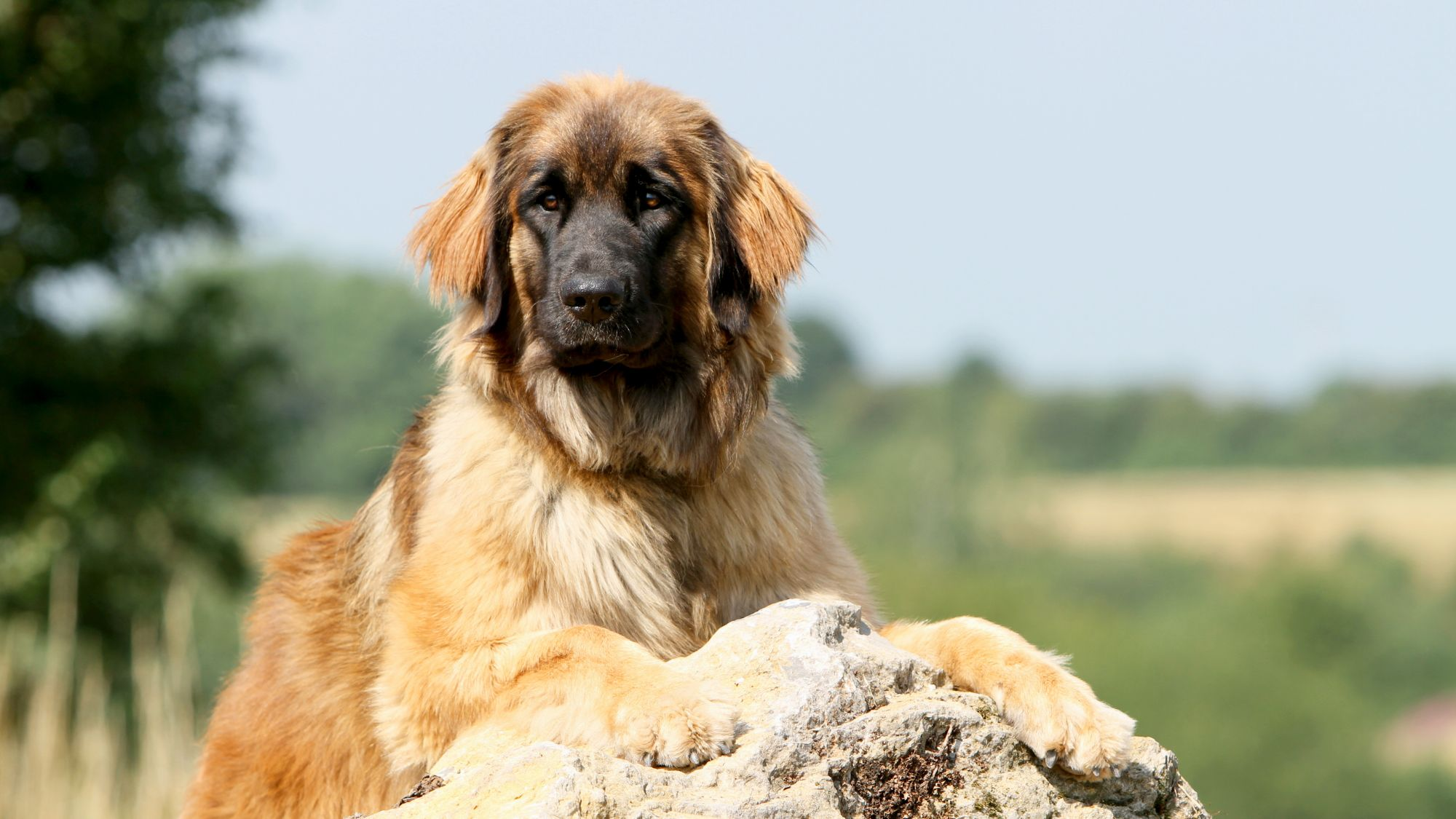
Things to look out for
From specific breed traits to a general health overview, here are some interesting facts about your Leonberger
A feeling of fullness
Larger dogs like the Leonberger can often have gastric dilation and volvulus (GDV), commonly called bloat. The condition happens when a dog eats too quickly, and their stomach turns, filling with gas. Sudden and serious, it requires immediate medical attention, but can be treated. Look for signs like swelling or discomfort. Calm mealtimes, with your dog resting for a period afterward is best, as are regular vet visits to ensure your Leonberger stays healthy.
Out of joint
Quite agile, the Leonberger is an active dog but hip and elbow dysplasia can flare up as a result. As a giant breed, they can develop the condition, which arises when the ball and socket joint don’t meet normally. Lameness in their rear legs is a sign, and arthritis may occur as your dog ages. A qualified veterinarian can conduct tests to check for the condition and offer the right kind of treatment. Leonbergers can also suffer from polyneuropathy, a group of diseases that affect parts of the nervous system. An inherited condition, it’s best if affected dogs are not used for breeding.
Healthy diet, healthier dog
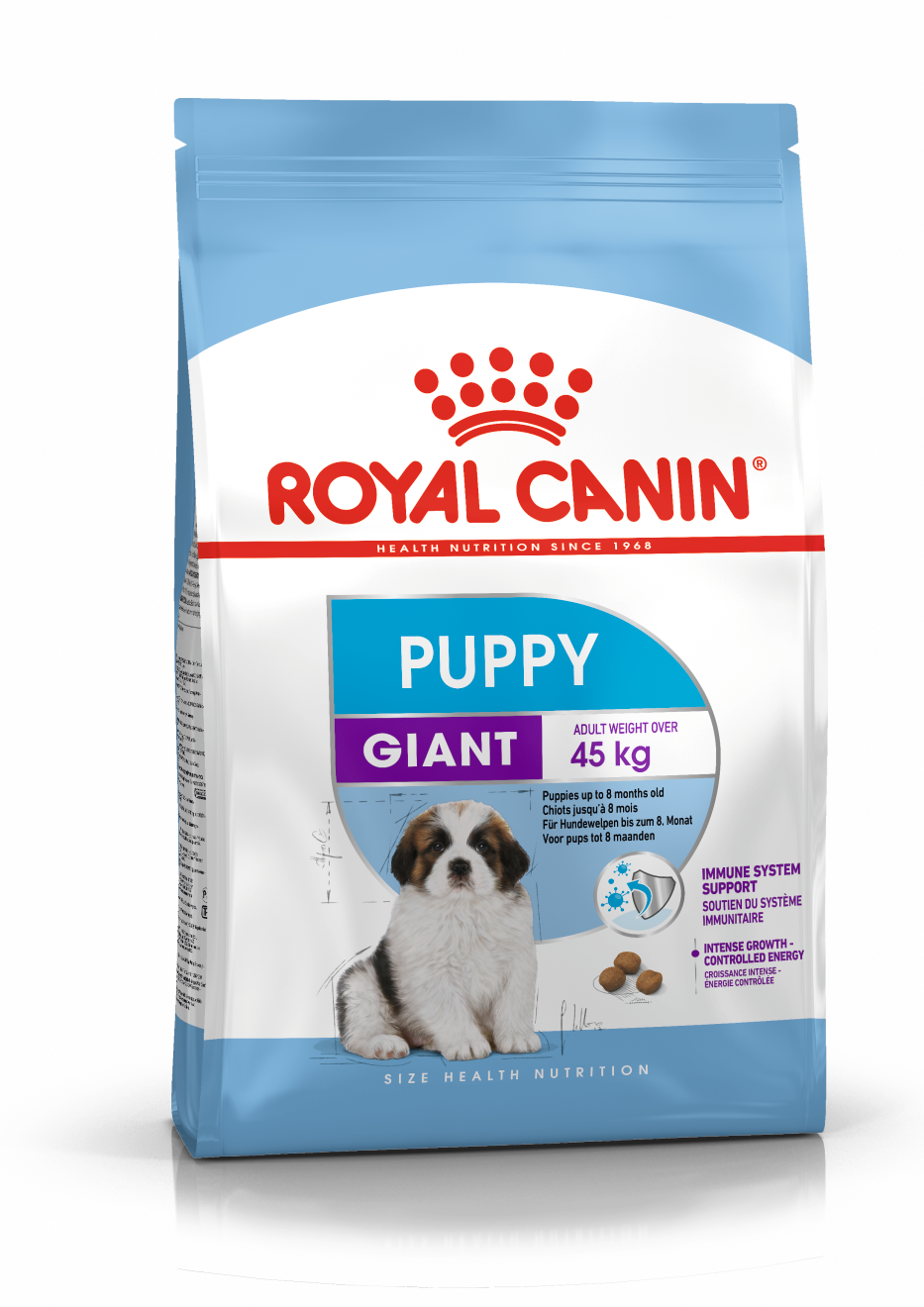
When choosing food for a Leonberger, there are many factors to consider: Their age, lifestyle, activity level, physical condition, and health including potential sickness or sensitivities. Food provides energy to cover a dog’s vital functions, and a complete nutritional formula should contain an adjusted balance of nutrients to avoid any deficiency or excess in their diet, both of which could have adverse effects on the dog. As giant-sized breed dogs have a higher risk of a condition called gastric dilatation volvulus (GDV), where the stomach becomes overstretched and rotated because of excess gas (usually caused by overfeeding during a meal), it’s recommended to split the daily allowance into three meals for puppies and try to keep this routine into their adult years.
Clean and fresh water should be available at all times to support good urinary regularity. In hot weather and especially when out exercising, bring water along for your dog’s frequent water breaks. Energy intake may also have to be adapted to the climatic conditions. A dog that lives outdoors in winter will have increased energy requirements.
The following recommendations are for healthy animals. If your dog has health problems, please consult your veterinarian who will prescribe an exclusively veterinary diet.
A Leonberger puppy’s requirements, in terms of energy, protein, minerals, and vitamins, are greater than those of an adult dog. They need energy and nutrients to maintain their body, but also to grow and build it. During their growth, a Leonberger puppy’s immune system develops gradually. A complex of antioxidants – including vitamin E – can help support their natural defences during this time of big changes, discoveries, and new encounters. Their digestive functions are different from an adult Leonberger’s, too: Their digestive system is not mature yet so it is important to provide highly-digestible proteins that will be effectively used for the building of bones, tissues, and organs. Prebiotics, such as fructo-oligosaccharides, can support digestive health by helping balance the intestinal flora, resulting in good stool.
Giant-sized puppies, whose growth period is long and intense, are especially susceptible to skeletal and joint problems, including limb defects, bone deformities, and joint lesions.
The first part of growth (up to 8 months) is mainly concerned with bone development, although the muscles also start to grow. This means that a puppy that eats too much (takes in too much energy) will put on too much weight and grow too quickly. A food with an adjusted calorie content to support a high growth rate while at the same time avoiding excess weight gain will help minimise these risks. A balance of energy and minerals (calcium and phosphorous) during this first phase of growth will contribute to bone mineralisation in order to support bone consolidation and the development of healthy joints. Although the calcium content in the food needs to be increased, giant-sized breed puppies are more sensitive to excessive calcium intake. It’s important to understand that adding any ingredients to a complete food formulated for the growth phase is at best unnecessary and at worst dangerous for the animal, unless prescribed by a veterinarian.
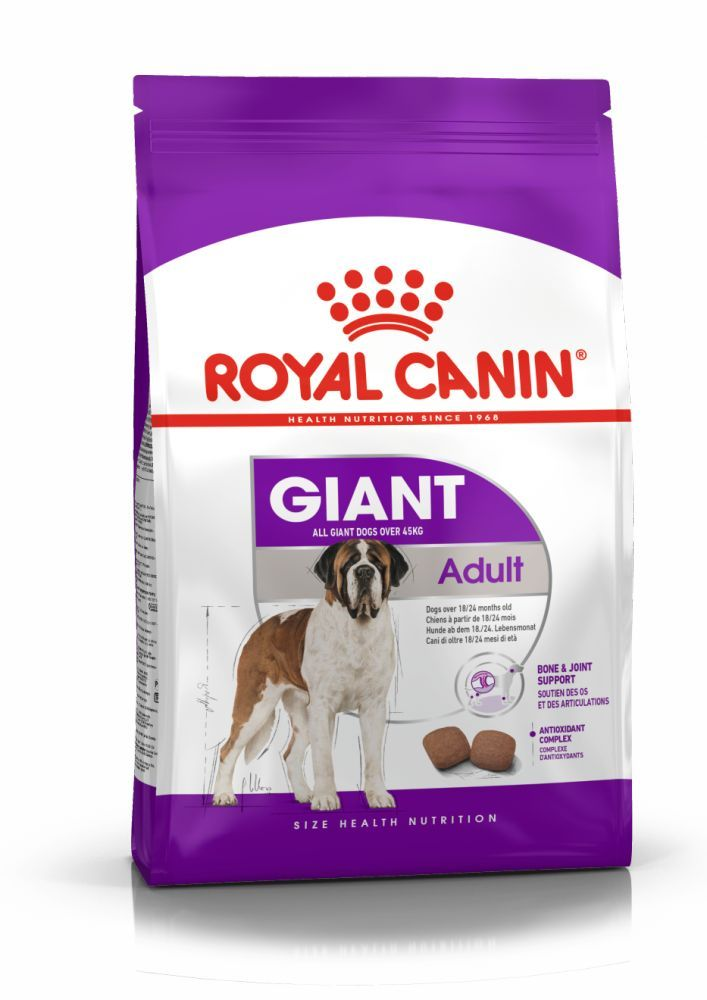
As with many giant-sized breed dogs, Leonbergers are prone to digestive sensitivity, and their body weight can create stress on their joints throughout their lifetime. Leonbergers’ nutritional needs then should include high-quality protein and a balanced supply of dietary fibre to help promote optimal digestibility, as well as glucosamine, chondroitine, and antioxidants to help support the health of their bones and joints. A formula enriched with omega-3 fatty acids, such as EPA and DHA, will help maintain healthy skin. An adapted taurine content is also important to support healthy heart function.
It is important to avoid feeding Leonbergers human foods or fatty snacks. Instead, reward them with kibble taken from their daily meal allowance, and strictly follow the feeding guidelines written on the package.
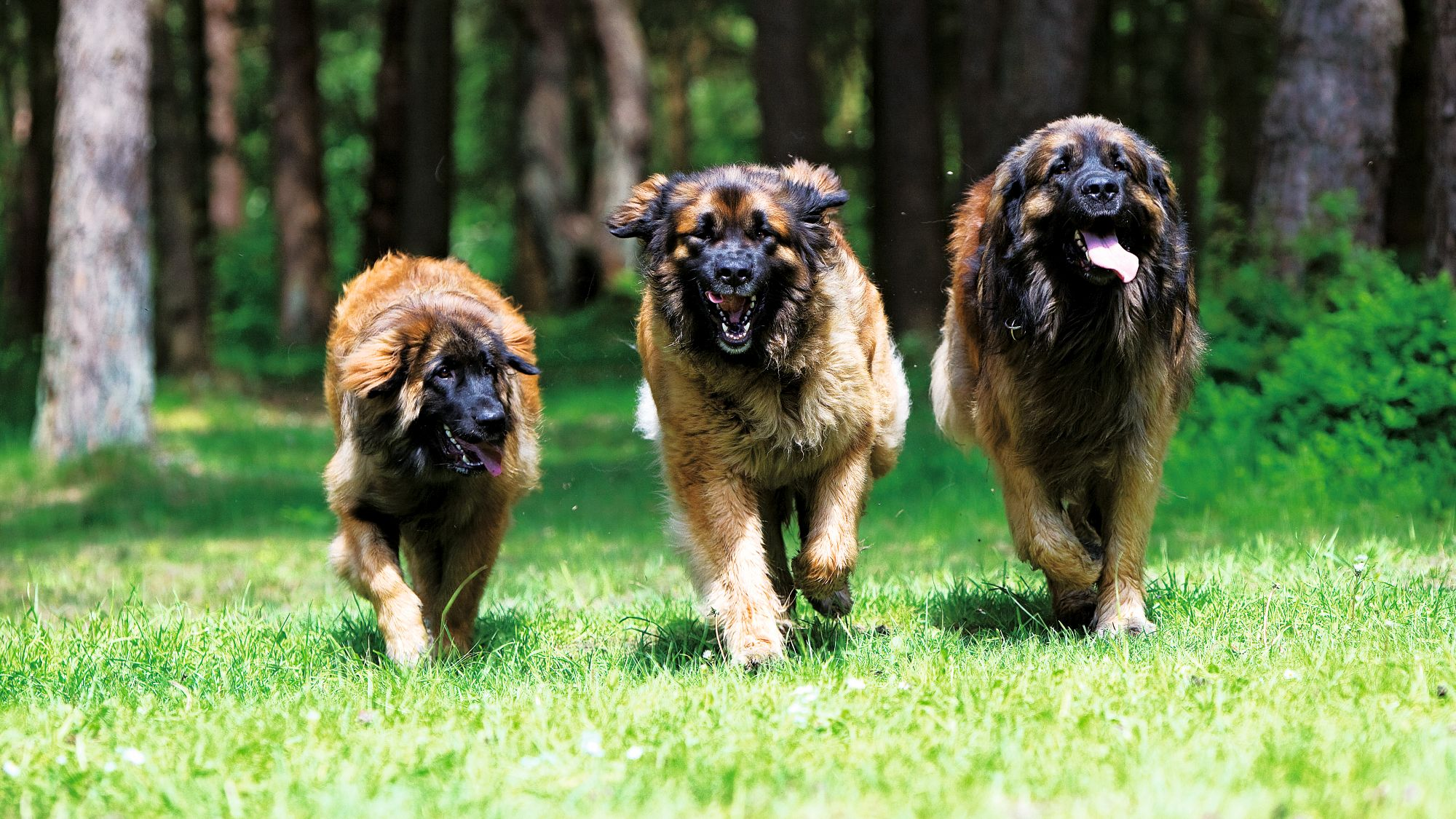
Caring for your Leonberger
Grooming, training and exercise tips
Long, full, thick, and dense, the Leonberger’s double coat is all of this and more so grooming will be a pretty consistent task—daily is recommended since there is a lot of ground to cover! The Leonberger sheds, and does so most during the moulting season twice a year. Use a metal comb and undercoat rake to tend to the shorter, fluffier undercoat is best as well as a pin brush and slicker brush for the furry, thicker outercoat. Nails should be trimmed every other week to keep this large breed on balance.
The Leonberger‘s size definitely means they should keep active but they don’t require a huge amount of exercise. Not to say that they don’t need room to roam: This is definitely not an apartment dog. And the exercise they enjoy most: Swimming! Leonbergers have a natural affinity for the water.
Training this giant breed needs to start early and socialising them with family and friends is best to develop them correctly. When Leonbergers are puppies and adults, they are bouncy and gregarious, so take care with them around toddlers and small children. With an adult male growing to as large as 150 pounds (68kg), it’s critical that the Leonberger is trained to know their place in the family unit. And the reverse is also true.
7/7
All about Leonbergers
Giant breeds are not all hard to handle—actually many, like the Leonberger, are quite affectionate and docile dogs. But knowing how to tackle their girth, especially if one has never owned a dog, is another thing entirely. This is a lot of canine, and the factor to consider with the Leonberger is their stubborn streak. They can easily gain the upper hand if training is not consistent and thorough from a young age.
Underneath that very thick coat lies the heart of a mushball. The Leonberger enjoys a good snuggle tremendously and is quite affectionate. They crave tenderness and will give a lot in return. And despite their size, the Leonberger is very much an indoor dog, always looking after their flock, so naturally gravitates toward nuzzling with their owner—or any member of the family for that matter.
Suggested Breeds
Read more on this topic
- Veterinary Centers of America https://vcahospitals.com/;
- Royal Canin Dog Encyclopaedia. Ed 2010 and 2020
- Banfield Pet Hospital https://www.banfield.com/
- Royal Canin BHN Product Book
- American Kennel Club https://www.akc.org/
Like & share this page